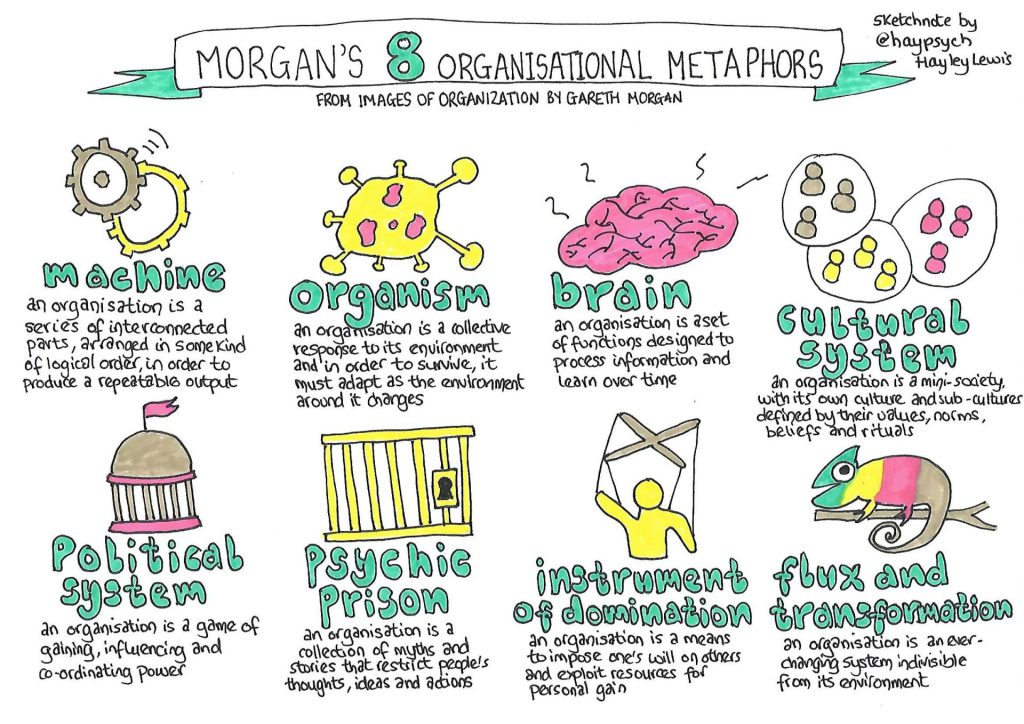DEEP DIVING WITH METAPHORS
May 31, 2023
As mentioned in the previous blog, the machine metaphor and the river metaphor give amazingly different perspectives. Different starting points to align your organization’s goals, mission, and vision. In this blog we are metaphorically speaking, deep diving with metaphors.
The machine and river metaphors are only the tip of the iceberg. There are many, hiding just beneath the surface.
An experienced reader may have recognised the subtle error I just made. As the iceberg metaphor is not primary about the hidden amount, but things that are visually observable, are based on other things that are not visually observable. The amount is secondary.
For instance, the (observable) behaviour is based on the (unobservable) attitudes, values, identity and personality. Or in case of Freud, the (observable) conscious is based on the (unobservable) preconscious and unconscious. Or in systems thinking, the (observable) events are based on the (unobservable) patterns and trends, structure and mental models. And of course, the obvious success iceberg illusion, the (observable) success is based on the (unobservable) persistence, failure, sacrifice, hard work etcetera. This metaphor is so successful, there are even PowerPoint templates available for sale.
Wrong?
The question is, is it an error when you use a metaphor as not originally intended? Analog to the remark people make about a model, “All models are wrong.”[1]. Which is, again according to Wikipedia, an aphorism, a memorable expression of a general truth or principle, first written by the statistician George Box. He was really thinking outside-in (the box) when he nuanced his statement later when he in 1978 stated “Models, of course, are never true, but fortunately it is only necessary that they be useful”.
The magic
Usefulness is where the magic of working with metaphors lies. It is just a way of using familiar, recognisable objects and relations, to express an often more abstract concept. It is not wrong if it allows you to communicate your message.
The thing is, that when you use a very familiar metaphor, you should be aware of a potential different message, based on the receivers (potentially erroneous) interpretations of that metaphor.
Many more
In his 2006 edition of his book “Images of Organization” (ISBN 9781412939799), Gareth Morgan introduces and explains eight metaphors. Please find a copy of this book and start reading.
Hayley Lewis created a handy visual summary.

Should we all be jumping on the bandwagon? Should we all be doing it[2]? I think so. Learning about metaphors enriched my way of looking at, and thinking about organisations. It helped me to put aside some of my misconceptions and assumptions. Especially the more visual metaphors such as the river, allow me to present it with all my body. Using big gestures, walking in front of an audience, trying to show them the direction the river flows to, how easy or hefty it flows, that you are standing in the river, how unable you are to stop it, where the pebbles lie that we as architects should move, etcetera. The more I use it, the richer the metaphor becomes.
Metaphor FOMO
I feel that using metaphors is an essential part of sensemaking, of making sense of your environment, to create a shared vision about what you are as an organisation. It helps you deal with complexity. An essential instrument in the toolbox of a sensemaking architect.
Do you feel the Fear Of Missing Out? -Are you ready to jump on the bandwagon and participate? Please tell me your favourite metaphor and the visible tip of your success iceberg.
[1] https://en.wikipedia.org/wiki/All_models_are_wrong
[2] See? I just explained the metaphor to verify we are on the same page, that we … 😊
Iceberg image is made by AWeith

 English | EN
English | EN 